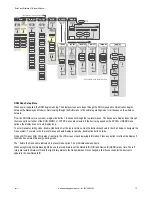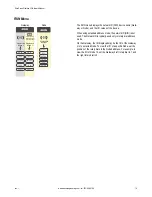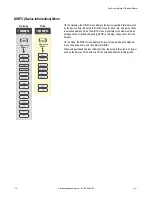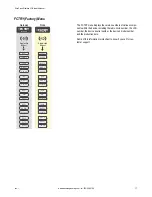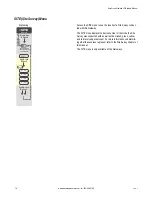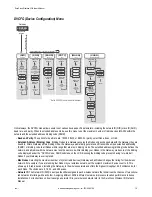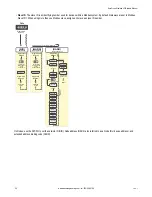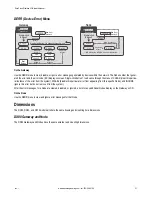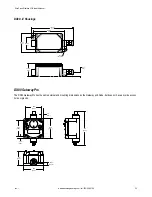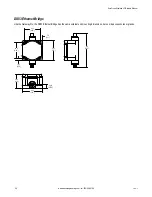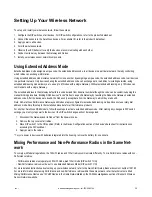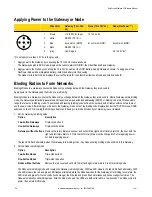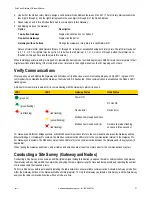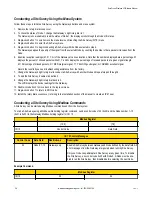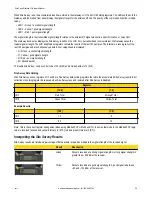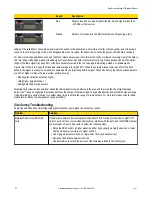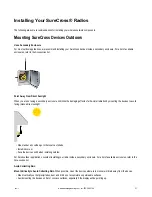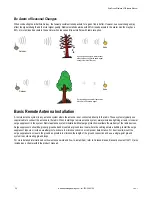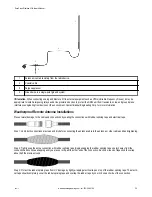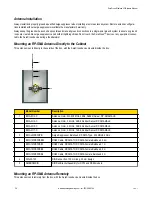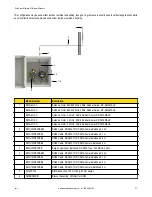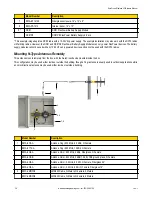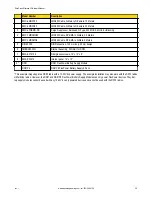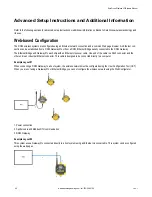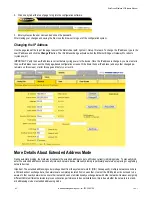
3. Use both of the Node's rotary dials to assign a valid decimal Node Address (between 01 and 47). The left rotary dial represents the
tens digit (0 through 4) and the right dial represents the ones digit (0 through 9) of the Node Address.
4. Repeat steps 2 and 3 for all Nodes that need to communicate to this Gateway.
5. Exit binding mode on the Gateway.
Option
Description
Two-button Gateways
Single click either button 1 or button 2
One-button Gateways
Single-click the button
Gateways with no buttons
Change the Gateway’s rotary dials to a valid Network ID.
Notes on Network IDs: Valid Network IDs are 01 through 32, in decimal, established using both rotary dials. The left dial may be set
to 0, 1, 2, or 3. The right dial may be set from 0 to 9 when the left dial is at 0, 1, or 2; or set to 0 through 2 when the left dial is at 3.
(Positions A through F are invalid network ID numbers.)
When installing special kits with pre-mapped I/O, indicated by device model numbers beginning in DX80K, return the rotary dials to their
original positions after binding. If the rotary dials are not returned to their original positions, the I/O mapping will not work.
Verify Communications
After powering up and binding the Gateway and its Nodes, verify all devices are communicating properly. Verify LED 1 is green. Until
communication is established with the Gateway, the Node’s LED 2 flashes red. When communication is established, the Node’s LED 1
flashes green.
A Node will not sample its inputs until it is communicating with the Gateway to which it is bound.
LED 1
LED 2
Gateway Status
Node Status
(green on)
Power ON
(green flashing)
RF Link OK
(red flashing)
(red flashing)
Device Error
Device Error
(yellow flashing)
Modbus Communication Active
(red flashing)
Modbus Communication Error
No radio link (when flashing
once every three seconds)
For Gateway and Ethernet Bridge systems, active Modbus communication refers to the communication between the Gateway and the
Ethernet Bridge. For GatewayPro systems, the Modbus communication LEDs refer to the communication internal to the Gateway Pro.
For Gateway only systems, the Modbus communication LEDs refer to the communication between the Gateway and its host system (if
applicable).
When testing the Gateway and Node, verify all radios and antennas are at least two meters apart or the communications may fail.
Conducting a Site Survey (Gateway and Nodes)
Conducting a Site Survey, also known as an RSSI (Radio Signal Strength Indication), analyzes the radio communications link between
the Gateway and any Node within the network by analyzing the radio signal strength of received data packets and reporting the number
of missed packets that required a retry.
Perform a Site Survey before permanently installing the radio network to ensure reliable communication. Activate Site Survey mode from
either the Gateway buttons or the Gateway Modbus holding register 15. Only the Gateway can initiate a Site Survey, and the Site Survey
analyzes the radio communications link with one Node at a time.
SureCross Wireless I/O Network Manual
rev. I
www.bannerengineering.com - tel: 763-544-3164
27

